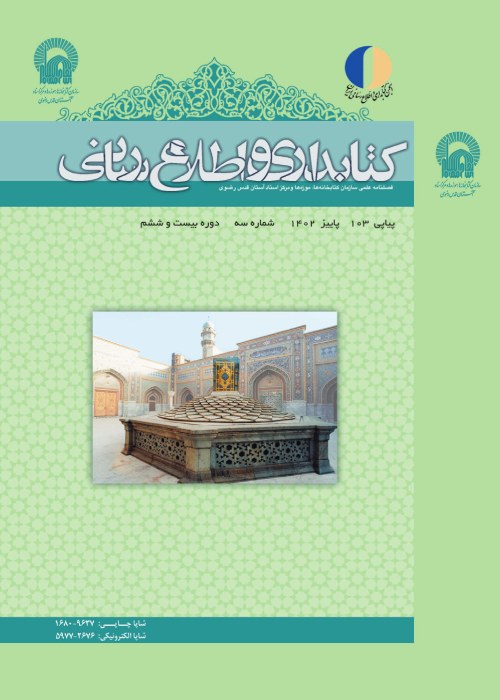Artists Designer Shah tahmasb's khamse Nezami Decorative border
The purpose of this study is to analyze decorative borders in Khamse Nezami Shah Tahmasb and compare them with the paintings and decorative borders of this period, first to identify the type of writing and the way of designing works, and then to identify the painters of these decorative borders.
The research is inductive and details of each artist's established works and practices have been used to reach a general conclusion about him/her. The sources of this research are library and website of British museums and other museums mentioned in the text.
Khamseh Nezami as the last work of Tabriz II School represents the peak of progress in Siyah Kalem design. This work has inspired artists who have worked on the Ghorkani School in India. The study goes beyond Arthur Pope's general arguments based on Sadeghi's remarks and Ali Afandi on Agha mirak, ending the notion that these works were performed by an artist and his students. Detailed comparisons and studies illustrate the work of the features of the pen and the style of the artists of that era Khamseh is one of the few works of the Safavid period that has been praised until then and its decorative borders are more beautiful than their predecessors. It is a bit difficult to distinguish the artist's style based on the paintings, but the repetitive elements in Mirza Ali's paintings and decorative borders were very helpful in this version. Some of the pages are linked to other corners of the work in the same and earlier versions. Khamseh's Decorative borders on the cross-sections are mainly of different designs. But there was no accurate information on which decorative borders were performed by any of the artists other than the probabilities. The excellent praise of Effendi and Sadeghi Big from Agha Mirak the painter and his emphasis on illumination have led the researchers to conclude that Decorative borders should be attributed to this painter. However, the analysis and comparison of the decorative borders with the works of one artist expresses something else. Some decorative borders have a significant relationship with the paintings, especially the details used in the background of the paintings. The results show that painters such as Mirza Ali, Sultan Mohammad, Ghadimi, Mir Seyed Ali, Mozafar Ali and Agha mirak played major roles in these decorative borders. Although certainty in assigning works is impossible, Examination of the works shows that the great designs were performed by these artists. The motifs used in the decorative borders are mostly quaint in earlier works such as Shahnameh and others but painting with Color is different from Siyah Kalem painting. As a result, those who have the skills to work with limited colors and Pointillism are more likely to be successful in Decorative borders.
The results show that painters such as Mirza Ali, Sultan Mohammad, Ghadimi, Mir Seyed Ali, Mozafar Ali and Agha mirak played a major role in performing these decorative borders. Some of the decorative borders have a significant relationship with the paintings, especially the details used in the background of the paintings.
- حق عضویت دریافتی صرف حمایت از نشریات عضو و نگهداری، تکمیل و توسعه مگیران میشود.
- پرداخت حق اشتراک و دانلود مقالات اجازه بازنشر آن در سایر رسانههای چاپی و دیجیتال را به کاربر نمیدهد.



